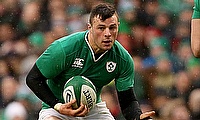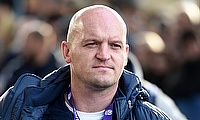Six Nations: XV Team of the Tournament
After perhaps the most spectacular and breathtaking finish to the Six Nations ever witnessed, picking a team of the championship became that little bit harder.
Putting aside the emotion and highs of Saturday, below is the XV, which after two months of intense and compelling rugby, makes up TRU’s team of the championship.
1. Joe Marler, England
With Cian Healey inhibited by injury and playing a bench role for Ireland for much of the tournament, this year’s campaign was an opportunity for Marler to stake a claim as the best in the northern hemisphere at his position. For the most part, Marler did just that, including a well-executed dissection of Welsh tighthead Samson Lee. Former club teammate Mike Ross continues to be Marler’s kryptonite, however.
2. Scott Baldwin, Wales
The Osprey has not only impressed during this tournament, but has also won Wales’ starting jersey from the talismanic Richard Hibbard. His consistent accuracy at the lineout was warmly received by the Welsh lineout jumpers, helping solidify any area of the game that Wales have struggled in over the last 12 months.
3. Dan Cole, England
Cole started the Six Nations just two weeks removed an injury and without any significant playing time under his belt in the previous month. There were suggestions pre-tournament that Cole could suffer from rust initially, but nothing proved to be further from the truth. Both Mike Ross and Euan Murray had good games, but neither could match the scrummaging impact and consistency of Cole.
4. Alun Wyn Jones, Wales
Courtney Lawes was only able to feature in the last two games of the tournament due to injury and put in two ferocious performances, but the multiple game-winning outings from the Welsh lock were enough to earn him the spot. Jones was tireless during the campaign, becoming more and more impactful late in games, whether that was making tackles, working at the breakdown or contributing at the set-piece.
5. Yoann Maestri, France
Performing consistently in a misfiring French squad is an unenviable task, but it’s one Maestri did with aplomb over the last two months. Scotland’s budding star Jonny Gray ran Maestri close, but the Toulouse lock was often the best player France had at their disposal during the tournament and certainly doesn’t deserve to be tarred with the same brush as the majority of the underperforming French squad.
6. Peter O’Mahony, Ireland
Bernard le Roux can consider himself particularly harshly done by, but O’Mahony did everything that was asked of him and more in Ireland’s six jersey. Italy’s Francesco Minto was also impressive, but couldn’t match the contribution O’Mahony made at the breakdown. The combination of O’Mahony and Sean O’Brien on the flanks continues to prosper for Ireland and may well be the best duo in the northern hemisphere.
7. Sam Warburton, Wales
Honourable mentions are due for Chris Robshaw and Blair Cowan, but Warburton showed not only his merits as a great openside flanker, but also as an exceptional captain. Warburton led Wales back from a disheartening defeat to England in the opening round, to a dramatic shot at the title in the final round, pilfering ball with abandon en route.
8. Billy Vunipola, England
Jamie Heaslip, Sergio Parisse and Taulupe Faletau all have valid claims on this spot, but Vunipola quietly went about having one of the better Six Nations of all players involved. His execution of the choke tackle was particularly impressive, whilst his carrying was, as expected, effective and dangerous. He may not have always been barrelling his way through defensive lines with impudence, but his all-round game was superb and highlights the maturation he has gone through as a player.
9. Conor Murray, Ireland
Ben Youngs grew into the tournament, even approaching the levels he displayed in his 2011 dismantling of Will Genia, but Murray was excellent for Ireland, and was vital in implementing Joe Schmidt’s gameplan. The Wales game aside, Murray played at a high level throughout the competition and continues to separate himself from his competitors with his unmatched tactical kicking ability.
10. Jonathan Sexton, Ireland
Sexton showed once more why he is undoubtedly the best fly-half in the northern hemisphere, guiding Ireland to their second consecutive Six Nations title. His potent attacking game was well-illustrated by his control of the ball both from hand and from boot, whilst he was never found wanting in defence. George Ford, Finn Russell and Dan Biggar all had moments of excellence, but none showed the complete repertoire that Sexton frequently demonstrated.
11. George North, Wales
Like Lawes, Nowell performed very well in the limited games he had available to him, as did France’s Noa Nakaitaci, but without larger sample sizes, it’s hard to pick them. North was starved of the ball at times, but when opportunities did come his way, he took them clinically, including an eye-catching hat-trick against Italy. North’s defence was also impressive, especially as it’s an area where he has been criticised in the past.
12. Robbie Henshaw, Ireland
It’s very difficult to separate Henshaw and Jamie Roberts, both of whom had stellar tournaments, but the Irishman took another big step towards becoming one of the premiere centres in the game. Henshaw was without match at the position defensively, whilst he also showed encouraging signs of becoming a more potent attacking weapon in his new position.
13. Jonathan Joseph, England
Despite being just 23 years of age, this year’s tournament proved to be a renaissance in the once-again burgeoning career of Joseph. The Bath centre provided England with a cutting edge in their midfield that only Manu Tuilagi has seemed able to match over the last few years and his understanding with fellow Bath backs George Ford and Anthony Watson bore fruit for England. Scotland’s Mark Bennett also deserves effusive praise for his efforts in a struggling team.
14. Liam Williams, Wales
The introduction of Williams for Alex Cuthbert certainly made the Welsh back three look more dangerous as the tournament went on and the Scarlet looked comfortable playing outside of his preferred position at full-back. It’s hard to imagine Williams, barring injury, not being in Wales’ back three when they meet again for their RWC warm-up games later this year.
15. Stuart Hogg, Scotland
There were rich pickings at full-back this year, with both Rob Kearney and Mike Brown also impressing, but Hogg’s greatest competition ultimately came from Leigh Halfpenny, who was as effective as ever for Wales. Hogg does pip the Welshman however, having had his best competition to date. The Scot showed an improved defensive understanding, which combined with his innate attacking instincts, have seen him develop into one of the most dangerous full-backs in the northern hemisphere.

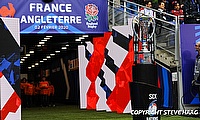
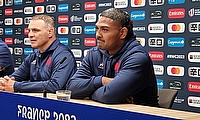
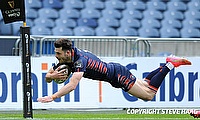
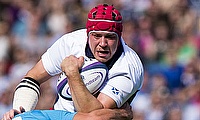
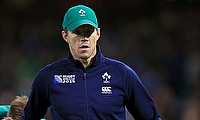
.jpg)
